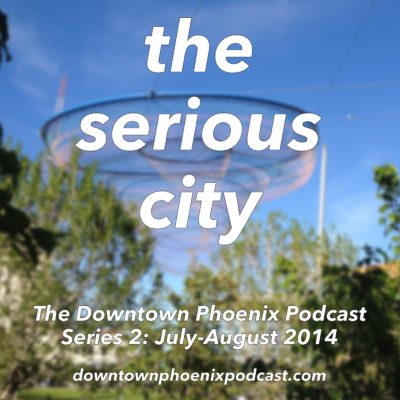[author’s note: Last week, I wrote Part 1 of this essay. Today’s essay is best suited if you’ve read Part 1 first.]
 One of the common criticisms of THE SERIOUS CITY is that people think it tries to invalidate existing ways of thinking about cities, place, and context. As I see it, that couldn’t be farther from the truth. This is a different way of thinking, true, but it builds upon all constructive ways of thinking about cities. It puts the focus of its thought on the policy side of the spectrum as more important than design.
One of the common criticisms of THE SERIOUS CITY is that people think it tries to invalidate existing ways of thinking about cities, place, and context. As I see it, that couldn’t be farther from the truth. This is a different way of thinking, true, but it builds upon all constructive ways of thinking about cities. It puts the focus of its thought on the policy side of the spectrum as more important than design.
What THE SERIOUS CITY seeks to accomplish is the following three things:
- In addition to asking the procedural questions of ‘how,’ ‘what,’ and ’when’ in its decision-making processes, The Serious City asks ‘why.’ Why are we doing this? What long-term effects will come from these processes?
- Realizing that each place is unique, The Serious City understands that copying-and-pasting solutions from other cities is not always the best approach. This does not automatically invalidate everything that has been implemented in other places; instead, this causes decision-makers to think about this place and understand context, geography, and environment.
- When criticism is levied against a city for any reason (including for no reason), The Serious City is able to evaluate that criticism and respond appropriately to it. It can differentiate factual observations from hyperbole and stretching of the truth. A response can range from no response to the appropriate policy interventions. This is not ‘blind-boosterism’ nor does it say that people who critique a place ‘hate’ it; instead, this is an introspective exercise to understand this place.
That’s really it. I’ve heard too many times that we need to emulate other cities in our urban renaissance. People think we need to look like Portland or Denver and take design and policy cues from them. We need to look like Phoenix. We need to address our core issue — that we live in a desert that gets pretty hot for five months of the year — and create a city that incorporates that.
But design is not the only thing. There are the important elements of policy and those seeking to run for elected office. How can we educate those individuals running for elected office for urban districts about the importance of cities and how to best serve their constituents? What does good urban policy look like at Federal and state levels?
It will be these questions and these principles that guide our conversation. Let’s do this.
 This week has been a perfect convergence of several events, conversations, and discoveries from the urban academy. (I love it when convergences like these happen!)
This week has been a perfect convergence of several events, conversations, and discoveries from the urban academy. (I love it when convergences like these happen!)